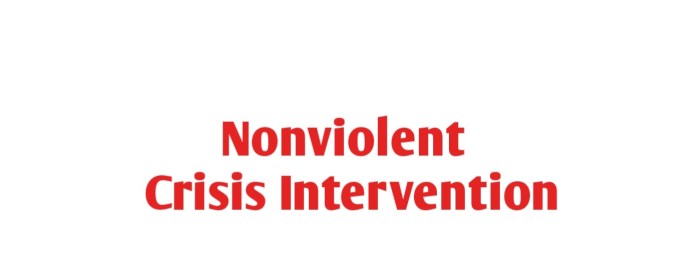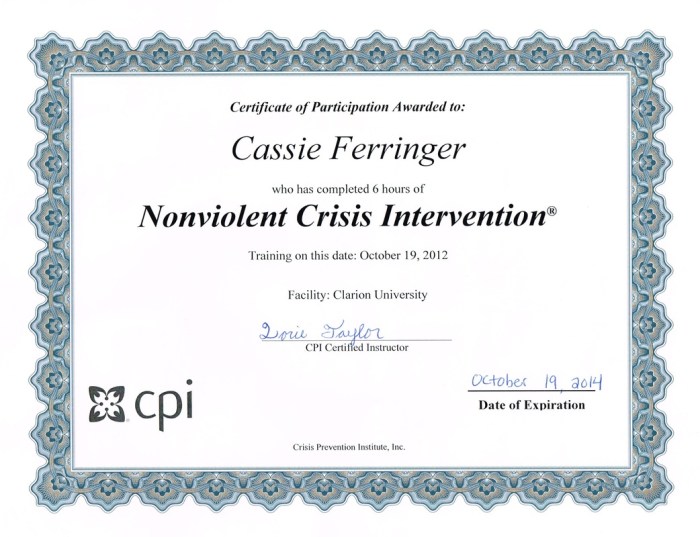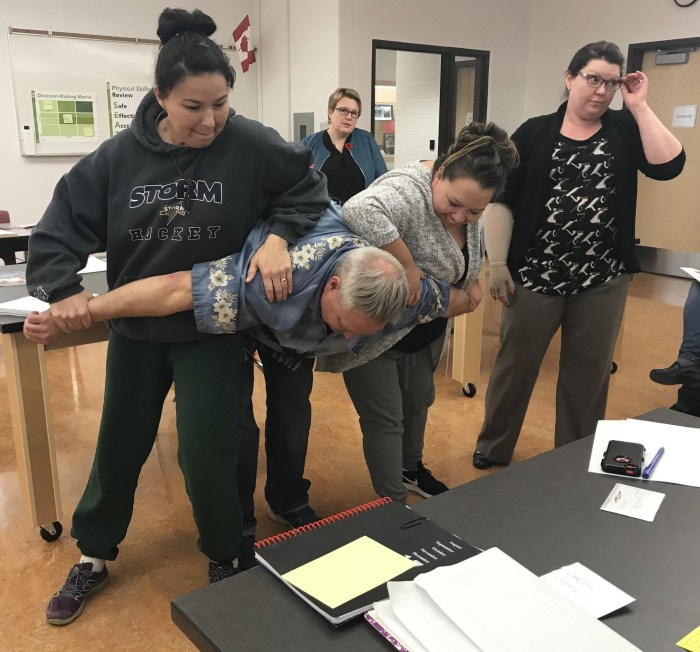Cpi non violent crisis intervention training – CPI Non-Violent Crisis Intervention Training, a cornerstone of crisis management, equips professionals with the knowledge and skills to effectively de-escalate and resolve crises without resorting to force or violence.
This comprehensive training program provides a framework for understanding and responding to individuals in crisis, empowering participants to maintain safety and prevent harm in challenging situations.
Introduction to Crisis Intervention Training

Crisis intervention training is a specialized form of training designed to equip individuals with the knowledge and skills to effectively manage and respond to crisis situations. Crises can range from mental health emergencies to violent altercations, and they can occur in various settings, including healthcare, law enforcement, education, and the community.The
prevalence of crises is alarming. According to the National Alliance on Mental Illness (NAMI), over 40 million adults in the United States experience a mental health disorder each year. Additionally, the World Health Organization (WHO) estimates that one in four people will experience a mental health condition at some point in their lives.Receiving
crisis intervention training is essential for individuals who may encounter crisis situations in their professional or personal lives. This training provides valuable skills and techniques that can help de-escalate crisis situations, prevent harm, and promote safety for both the individual in crisis and those around them.
Understanding CPI Non-Violent Crisis Intervention

CPI Non-Violent Crisis Intervention is a widely recognized and evidence-based training program that teaches individuals how to safely and effectively intervene in crisis situations without resorting to physical force. CPI training is based on the principles of de-escalation, communication, and physical intervention techniques.CPI
training was developed in the 1980s by a group of mental health professionals and law enforcement officers who recognized the need for a non-violent approach to crisis intervention. Since then, CPI training has been adopted by thousands of organizations worldwide, including hospitals, schools, law enforcement agencies, and mental health facilities.The
key components of CPI training include:
- De-escalation techniques: CPI training teaches individuals how to identify and respond to early warning signs of crisis, and how to use verbal and non-verbal communication to calm and de-escalate individuals in distress.
- Communication skills: CPI training emphasizes the importance of active listening, empathy, and validation in crisis intervention. Individuals learn how to communicate effectively with individuals in crisis, even when they are agitated or aggressive.
- Physical intervention techniques: CPI training teaches individuals how to use safe and effective physical intervention techniques to restrain individuals who are actively aggressive or violent. These techniques are designed to minimize harm and promote safety for both the individual in crisis and the intervener.
Query Resolution: Cpi Non Violent Crisis Intervention Training
What is the primary objective of CPI Non-Violent Crisis Intervention Training?
CPI training aims to provide professionals with the skills and knowledge to safely and effectively manage crisis situations without resorting to force or violence.
How does CPI training benefit professionals in different fields?
CPI training enhances communication skills, improves safety, reduces liability, and empowers professionals to confidently handle crisis situations in various settings, including law enforcement, healthcare, education, and social services.
What are the key components of CPI training?
CPI training covers a range of topics, including crisis assessment, de-escalation techniques, physical intervention strategies, and post-crisis management.
